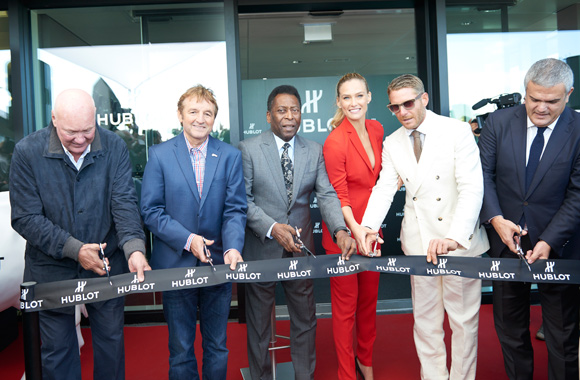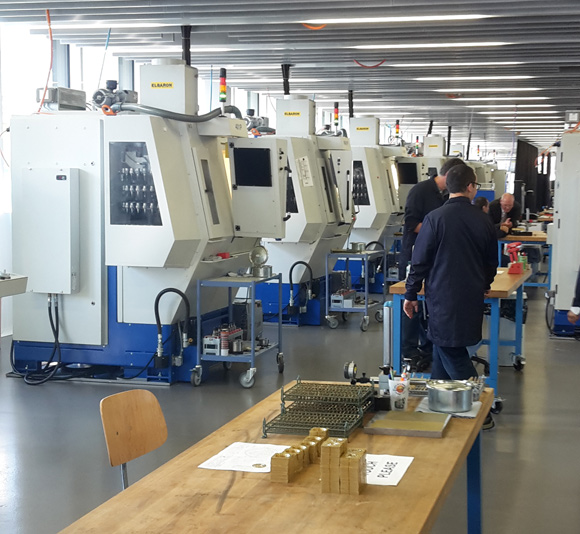“Don’t buy a Hublot watch, they are addictive. You would want to buy a second, then a third… And we would have to build a third building,” Jean-Claude Biver joked yesterday to over 300 guests. Although we might well believe in the visionary spirit of the Chairman of the LVMH watches division and the Chairman of Hublot, things have not yet reached that stage and it was the second building – nicknamed H2 – that was opened in the presence of friends of the brand Pelé, Bar Refaeli, Lapo Elkann, but also Michel Pont and the mayor of Nyon Daniel Rosselat, who stressed the town’s pride of having the Hublot production facilities on its territory.

Barely 18 months after breaking ground, H2, which cost nearly 20 million Swiss francs to build, is already operational. The staff and machines have already moved into the 8,000 square metres spread across four floors in the black building, which is the twin of the first building from 2009, henceforth known as H1. The two buildings are separated by the Nyon - La Cure railway and joined by a black bridge inspired by those seen on Formula 1 circuits. The little red trains that regularly pass beneath create quite a contrast!

H2 will be used for the production of in-house movement components and cases but also incorporates the micromechanics workshop, CNC machines, decoration, galvanising and general mechanics workshops. It is also the new home of the brand’s customer service department and part of the administration. Employee well-being has been taken into account with a new cafeteria on the ground floor. Two charging stations are available in the car park for those with an electric car. Hublot’s commitment to sustainability also led to the choice of solar panels to produce renewable energy.

The new facility will create 100 new jobs over the next five years, bringing the total workforce in Switzerland up to 400 people.
H1, now free of its machine park, is mainly used for assembly and grand complications. The department of Innovations, Research and Development has more space available and now fills the ground floor entirely. This is also where you can find the laboratory-foundry where Magic Gold is produced. Stone-setting, which was previously done at a production unit in Gland, now also has a home at H1.
Click on the large image at the top of this page for a comprehensive photo-gallery





